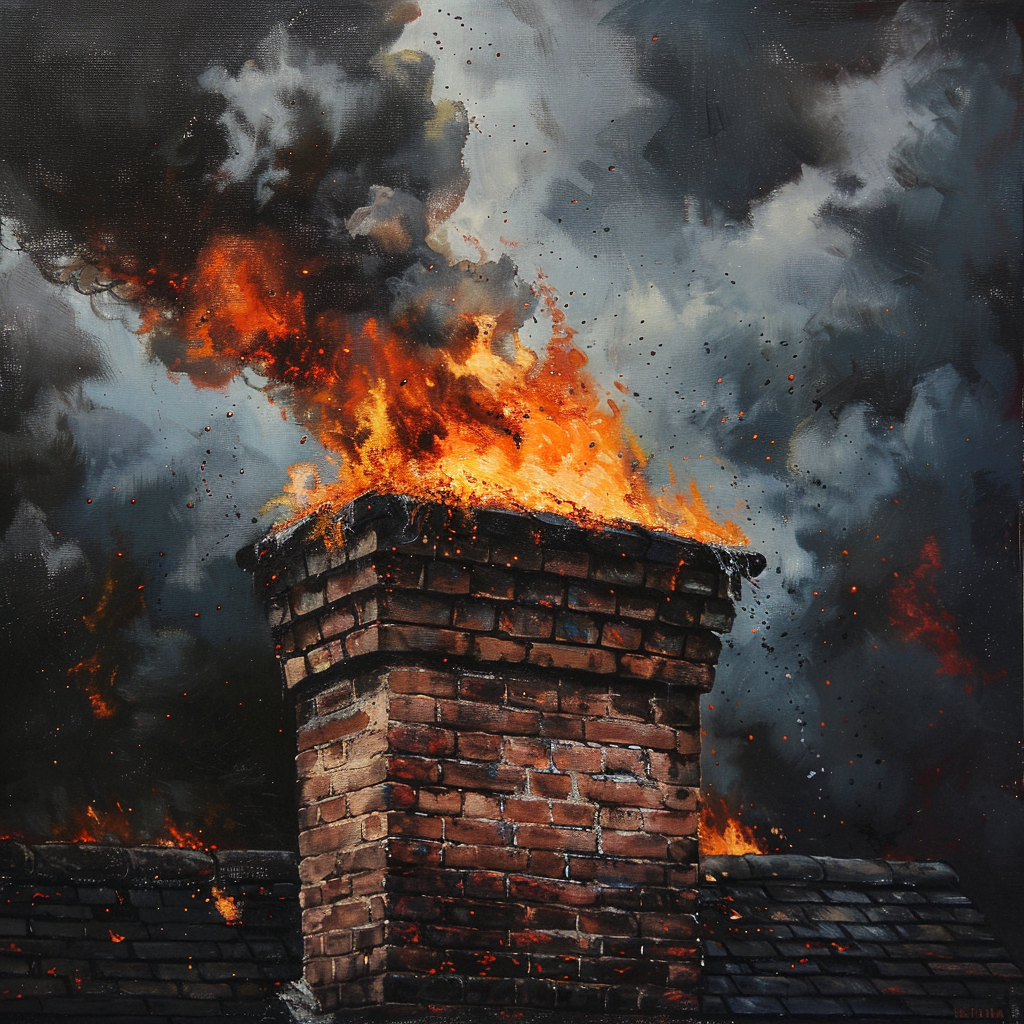
When is the Last time you had your Chimney Swept?
Chimney Sweeping should be done annually to insure safety, proper function and draft..
We Service Huntsville, Bracebridge, Katrine, Burks falls, Dorset, Dwight, Lake Rosseau, Lake Joseph, Port Sydney, Baysville and surrounding Ontario towns.
How Chimney Fires Damage Chimneys
Your fireplace might be a cozy focal point, but neglect can transform it into a hidden hazard. While enjoying warm fires, chimney maintenance often slips the mind. However, ignoring the buildup of creosote, smoke, and debris can lead to disastrous consequences.
Chimney fires pose serious risks, from property damage to personal safety. The extent of the damage depends on factors such as chimney type and the severity of the buildup.
Masonary Chimneys
According to the Chimney Safety Institute of America (CSIA), masonry chimneys, regardless of age, can vary in lining. When exposed to the intense heat of a chimney fire, these chimneys can suffer severe damage. Mortar melts, tiles crack, liners collapse, and even the exterior masonry can weaken. The resulting thermal shock often cracks tiles and dislodges mortar, creating a dangerous pathway for flames to spread into the home's combustible wood frame.
Prefabricated Metal Chimneys
Prefabricated metal chimneys are typically designed to vent wood-burning stoves or other prefabricated fireplaces. To ensure safety, these chimneys must undergo rigorous testing to withstand temperatures up to 2100°F without damage. Despite these stringent standards, wear and tear can occur, often resulting in warped or buckled seams and joints in the inner liner. Any sign of damage necessitates immediate chimney replacement to prevent potential hazards.

While wood stoves are designed to withstand intense heat, the connected pipes are more vulnerable. Exposed to high temperatures and the pressure of air currents during a fire, these pipes can become warped, buckled, or even detached. If damaged, they must be replaced.
Interestingly, some chimney fires leave no visible traces. As a result, it's crucial to schedule regular chimney inspections, ideally in late summer or early fall, before the heating season begins.
A Professional chimney sweep can detect signs of a chimney fire by carefully inspecting your chimney system. Here are some key indicators:
Several indicators can help you determine if your chimney has suffered a fire.
Visible damage: Warped metal components, cracked or damaged masonry, and distorted rain caps are clear signs of extreme heat exposure.
Creosote changes: The appearance of "puffy" or unusual creosote formations suggests a potential fire. Additionally, finding creosote flakes on your roof or ground can be a red flag.
Structural issues: Cracks in the chimney's exterior, damaged roofing, or evidence of smoke escaping through mortar joints point to a possible fire.
Internal damage: Inspecting the chimney interior might reveal cracked, collapsed, or missing flue tiles, which are common after a fire.
If you suspect a chimney fire, contacting a professional chimney sweep is crucial. They can assess the damage and recommend necessary repairs or replacements to restore your chimney's safety and efficiency.
chimney sweeping in huntsville, bracebridge, burks falls, dorset, dwight, muskoka, port sydney, katrine.



